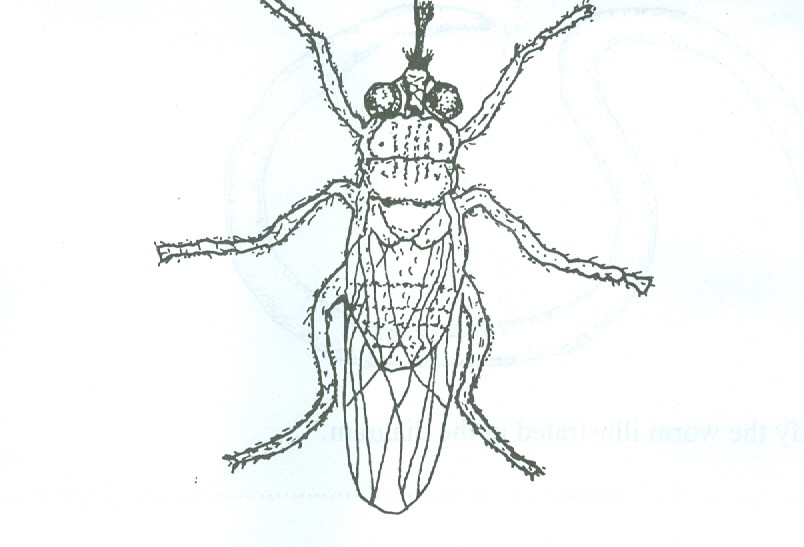Question 3
The diagram illustrates an insect associated with humans. Study it carefully and answer questions.
3(a),(b), (c) and (d).

- Name the illustrated insect [ 1 mark ]
- State two observable features which enable the illustrated insect to transmit disease [2 marks ]
- Name the disease transmitted by the illustrated insect [1 mark ]
- State four ways of controlling the population of the illustrated insect. [4 marks ]
Observation
This question was attempted by many candidates. In part (a), majority of the candidates could not correctly name the illustrated insect as tsetsefly instead they named it as housefly. In part (b) candidates could not also state observable features which enable the tsetsefly to transmit diseases. In part (c) candidates also could not name the disease transmitted by the tsetsefly insect. In part (d) few candidates correctly stated ways of controlling the population of the illustrated insect.
The expected answers are as follows:
3 (a) (i) NAME OF THE ILLUSTRATED INSECT
- tsetsefly
(b) FEATURES THAT ENABLE ILLUSTRATED INSECT TO TRANSMIT DISEASE
- biting mouth part
- proboscis/sucking
(c) DISEASE TRANSMITTED BY THE ILLUSTRATED INSECT
- trypanosomiasis/sleeping sickness
(d) WAYS OF CONTROLLING THE ILLUSTRATED INSECT
- clearing vegetation surrounding buildings
- using insecticide to eradicate the insect
- isolate cattle or other animals suspected to have been bitten by tsetseflies
- destruction of breading sites/burning of affected area
- biological control
